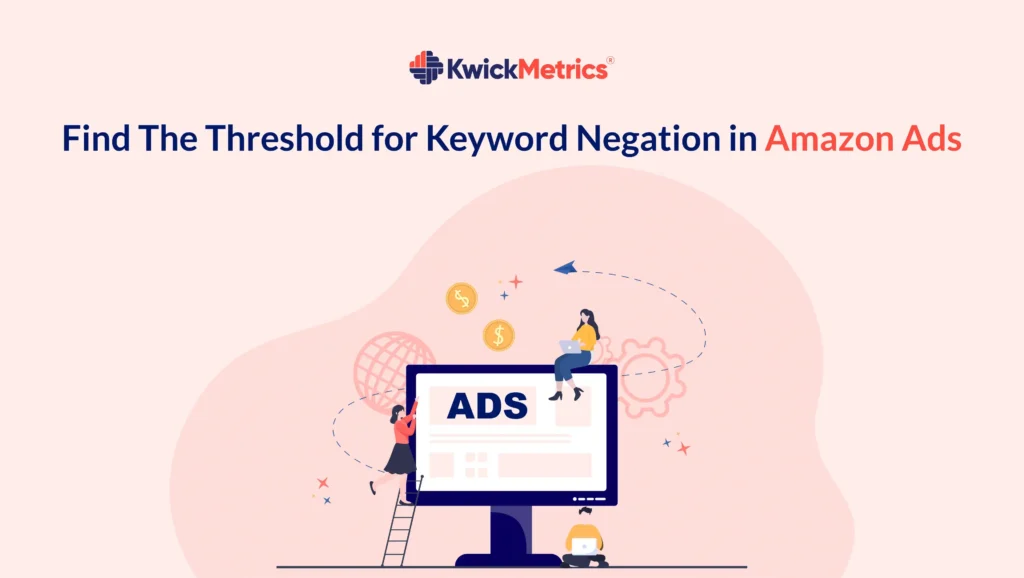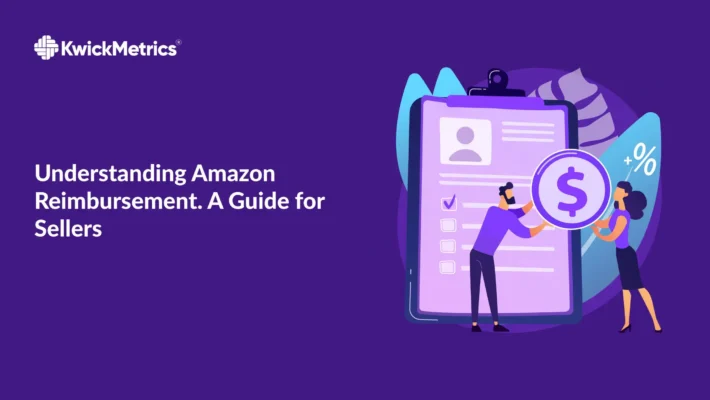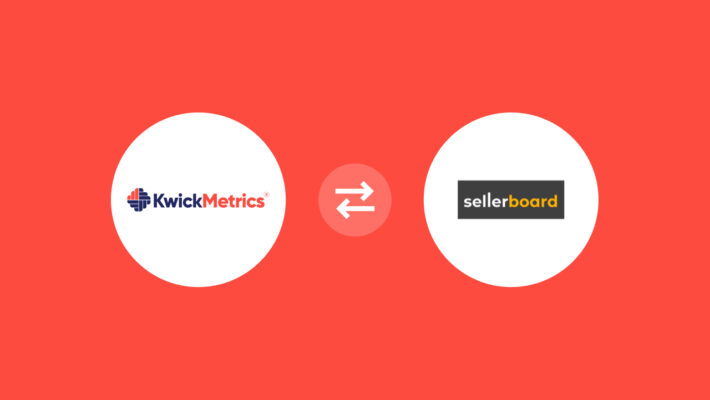Find The Threshold for Keyword Negation in Amazon Ads

Table of Contents
Are you interested in knowing the number of clicks you need to provide a search term prior to making it negative in Amazon Ads?
You’re at the right spot.
In this article, we will discuss some important aspects you need to take into consideration when making a search term negation decision to use Amazon PPC.
Four Important Things to Consider When evaluating the search term negative for Amazon PPC
1. Relevance
The “auto” or “broad” matching campaigns could result in ads for a variety of search terms that are not relevant.
Start by determining the relevance of the search terms you have chosen to use with the advertised product.
If the search term you are searching for isn’t relevant to your business and you want to eliminate it in just a couple of clicks. This will stop you from bleeding your money on unrelated search terms.
2. Nature of Search Terms
You can classify all terms you search for into three distinct categories:
A. Branded Terms
Keywords that have a connection to the brand you represent (Example; Apple Air pod can be a trademarked term for Apple)
If it’s a brand-name term, then we do not advise denying it after a certain number of clicks.
When evaluating the keywords of branded brands, it is important to consider the compatibility of the keyword to the brand’s advertised product is crucial.
For example, if “iPhone charger” ad is shown in ” iPhone USB – C Power Adaptor” This is okay, but if it is shows it on “MacBook USB adapter” then you may need to defy the keyword.
B. Visibility Terms
There are some key keywords that you will need to keep your visibility up to date to stay relevant and competitive in your field.
For example: A company selling gaming mouse might want to remain visible with high-intent keywords such as “RGB mouse” or “wireless Gaming mouse”
In this scenario we wouldn’t recommend dismissing those search terms; instead, focus on optimizing the results by putting bids on them.
C. Generic Terms
Any other word or ASIN that isn’t included into the two categories above could be considered to be as a generic name to describe your company’s brand. In the event that it’s not a general phrase then you should follow the following guidelines.
KwickMetrics - The Business Intelligence and Analytics Tool
Explore 14-day free trial! No credit card required, cancel at any time.
3. Conversion Rate
If a term you search for meets the two above criteria, then you must look at the conversion rate for the product being advertised.
We suggest waiting at least 2x to 3x of the number of clicks for at least one conversion that is based on the price of the product’s CVR.
For Example, if you’re selling a home enhancement product with a conversion ratio of 15%, then you could expect to see an increase in sales after about every seven clicks. In this case, you should wait for fifteen to twenty-five clicks before eliminating a search term.
However, when you’re selling an apparel item that has a rate of conversion at 5 percent then you should wait for between 50 and 60 clicks before eliminating a search term.
4. Max CAC & Average CPC
If you know the maximum price per order and the cost per click average it can help you in making a more efficient search term negation decisions.
Let’s understand with an example:
Let’s say that your maximum cost per acquisition of an order is $10. Your average CPC in the last thirty-day period is $0.25. So, you could sit for forty clicks (10/0.25) before removing any search terms.
How do I automate Negative Keywords in Amazon Ads?
Automating the use of negative keywords in your Amazon ads is a critical step to optimizing your PPC campaigns. Negative keywords prevent your ads from appearing in irrelevant searches, saving you money and improving the overall performance of your campaigns by ensuring that your ads only show to customers who are most likely to convert. Automating this process can help you streamline your keyword management, reduce wasted ad spend, and improve your return on investment (ROI).
Here’s how you can automate the negation of keywords in Amazon Ads:
1. Use Automated Rules in Amazon Advertising
Amazon provides built-in tools that allow sellers to create automated rules for their PPC campaigns. By leveraging these rules, you can automatically add underperforming or irrelevant search terms as negative keywords.
Set Performance Thresholds: You can set thresholds based on specific performance metrics such as:
- Low Click-Through Rate (CTR)
- High Advertising Cost of Sales (ACoS)
- Zero Conversions
When a search term exceeds these thresholds, it is automatically added to your negative keyword list.
Customize Conditions: You can customize the conditions that trigger the automation of negative keywords. For instance, if a keyword generates clicks but no sales after a certain number of impressions or clicks, it will be automatically negated.
Campaign-Level or Ad Group-Level Negation: You can set up these rules either at the campaign level or the ad group level, depending on how granular you want your automation to be.
2. Use Amazon Bulk Operations for Keyword Management
Another way to automate negative keywords is through Amazon’s Bulk Operations feature. This tool allows sellers to manage large sets of keywords across multiple campaigns at once, saving time and effort.
- Download Bulk Files: You can download a bulk file that includes all your campaign data, including search terms and performance metrics.
- Identify Underperforming Keywords: Using this data, you can identify search terms that are wasting ad spend (e.g., high clicks but no conversions).
- Upload Negative Keywords in Bulk: Once you’ve identified the irrelevant or costly keywords, you can update your bulk file by marking these search terms as negative keywords and upload it back to Amazon. This automation allows you to make large-scale adjustments efficiently.
3. Leverage Third-Party Tools for Automation
There are several third-party tools available that offer advanced automation for managing negative keywords in Amazon Ads. Tools such as Helium 10, PPC Entourage, or Sellics can help streamline this process:
Automated Rule Creation: These tools often allow for more sophisticated rule creation. You can set up complex rules to automatically add negative keywords based on specific criteria, such as:
- Impressions exceeding a certain threshold with no conversions.
- ACoS exceeding your target level.
- Clicks exceeding a predefined number without generating sales.
Dynamic Negative Keyword Suggestions: Many of these tools offer dynamic negative keyword suggestions based on ongoing performance, allowing you to continuously optimize your campaigns without manual intervention.
Scheduled Automations: Some tools also allow you to schedule keyword updates at regular intervals, ensuring that your negative keyword list is always up to date without the need for manual reviews.
4. Regularly Review and Refine Your Negative Keywords
Even though automation can save you a lot of time, it’s still essential to regularly review your campaigns to ensure that the negative keyword automation is working effectively. Automation might sometimes flag keywords that could still be relevant, so it’s a good practice to review your negative keyword lists periodically to refine them.
- Check Performance Reports: Use Amazon’s Search Term Reports to regularly check which keywords are underperforming. Even with automation, some manual adjustments might be necessary for optimal results.
- Refine Rules Based on Data: Over time, you may need to adjust your automation rules as trends in your campaign evolve. This ensures that your negative keyword strategy remains aligned with your campaign goals.
Benefits of Automating Negative Keywords in Amazon Ads
Automating the process of adding negative keywords brings several advantages to your PPC campaigns:
- Cost Efficiency: By automatically negating irrelevant or underperforming keywords, you prevent wasted ad spend and ensure your budget is focused on terms that convert.
- Improved Campaign Performance: Automation helps optimize your ad performance by improving click-through rates (CTR), lowering ACoS, and boosting your overall return on ad spend (ROAS).
- Time Savings: Managing negative keywords manually can be time-consuming, especially for larger campaigns. Automation allows you to scale this process without the need for constant manual monitoring.
- Better Targeting: Negative keyword automation ensures that your ads are shown only to relevant audiences, increasing the likelihood of conversions and improving the relevance of your campaigns.
Last Thoughts on Search Term Negation:
There’s no one-click threshold for all brands and products on Amazon.
It should only be dependent on the key metrics such as conversion rate, maximum CPC and CPC of promoted products.
What are other aspects you take into consideration when denying the search term you are considering within Amazon Ads?
We’d love to hear from you via the comment…
Read Utilize a Data-driven Campaign Plan to Increase Amazon Ads ROI to make a strategic decision on optimizing ads performance.




